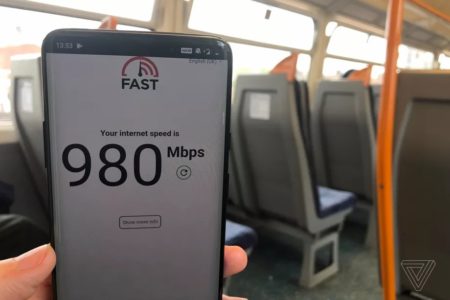October 16, 2019 – The first 5G smartphones have been announced. The question is, why?
To me this more marketing hype than reality.
5G, the new telecommunications paradigm promises worldwide high-speed wireless connectivity.
Yet there is in 5G not a lot of there, there. So far worldwide deployments amount to:
- 8 in America.
- 10 in Asia.
- 2 in Australia.
- 14 in the Middle East and Africa.
- and 21 in Europe.
By the end of this year, 5G commercial deployments will have reached 55 in number, a small fraction of the tens of thousands of telecommunication networks in existence today.
What preceded 5G?
Before 5G there was:
- 0G – referring to the period before the first cellular networks were built.
- 1G – marking the first analog cellular network and the first cell phone, the Motorola DynaTAC 8000X, affectionately called the Brick which first appeared in 1983.
- 2G – marking the development of digital cellular networks capable of 100 to 300 kilobits per second downloads, and offering encryption, short messaging, pictures, and multimedia delivery.
- 3G – saw increases in download speeds of up to 42 megabits per second, allowing for video calling and the watching of live television.
- 4G – with it known LTE variants, has raised download speeds to between 150 and 300 megabits per second, with 4G+ approaching even faster speeds and making smartphones capable of becoming playing videogame consoles.
And now comes 5G – offering download speeds of 1 Gigabit per second and the ability to not only handle the human component of telecommunications but also the vast and growing number of non-human devices including smart sensors and switches, called the Internet of Things (IoT).
In a recent forecast, Gartner stated that 7% of communication service providers today are deploying 5G infrastructure in anticipation of the worldwide deployment of this faster paradigm. The Gartner forecast included revenue figures anticipating growth in 5G of 89% by the end of 2020 from the current $2.2 billion in 2019.
And even though we are at the beginning of 5G deployment, it is interesting to note that there are still 2G and 3G telecommunications service operators in the world. The last of them in Taiwan and Thailand, by the end of this year, may shut down permanently.
4G, LTE, and variants are currently pre-eminent, deployed by service providers globally, and likely to continue to be the dominant telecommunications platform throughout the coming decade. When you consider it took 10 years to deploy 4G in the United States, I suspect that telecommunications providers are still trying to achieve a return on their investment.
5G will make 4G deployment look easy and cheap comparatively. 5G is considerably more complex, requiring new technologies, and a far denser cellular network. Most providers will find the cost pretty steep. So even when they announce 5G deployments, what will probably be put in place is a 4G+ network that will approach the download speeds of 1 Gigabit per second but not quite get there. And as for upload speeds, don’t expect anything close to your download experience.

Why the delay in 5G deployment?
5G is a work in progress. The standard has yet to be finished and won’t be finalized until sometime in 2020 or even 2021. With 5G deployment it requires new chipsets, new antennas, and significantly greater cell density. For example, the EE recent 5G deployment depicted in the picture, above is promising to add 100 cell sites per month to increase speeds incrementally beyond those of 4G. Without vastly increased cell density, 5G will fail to meet expectations.
And not to put a downer on the technology, at best, 5G when fully deployed will give smartphone users the feel of a good WiFi connection, capable of streaming high-definition programming. The true promise of the technology will come about with the billions of smart sensors interacting with billions of new cellular antenna. So if you are an early adopter of a 5G smartphone like the latest Samsung Galaxy Note 10 and the Huawei P30 Pro, you may find yourself disappointed when they deliver no more than the experience of a 4G+ network.
Where to find 5G networks?
Don’t expect 5G to become a global phenomenon in the next 5 years. 4G is showing it is more than robust enough to handle current levels of mobile telecommunications traffic. But it is far more likely if you live in South Korea, China, Japan, and the United States, (sorry the United Kingdom), we should see significant growth in 5G networks with China by 2025 representing 40% of global connectivity.
Oh, and did I mention 6G? In an article appearing on this blog site in January of this year China was already working on 6G deployment with download speeds of 1 terabyte per second and the end of any latency issues for wireless networking. The implications for IoT means instead of billions of smart sensors and devices, that number will grow to trillions, enabling autonomous vehicles, smart homes, roads, lighting, and even the emergence of an augmented reality akin to the Star Trek holodeck.
But let’s not get ahead of ourselves. I don’t suspect widespread 5G globally until the late 2020s and early 2030s and by then maybe it will be supplanted by 6G because in the world of telecommunications this is the ongoing state of technological disruption and innovation in our 21st century.















